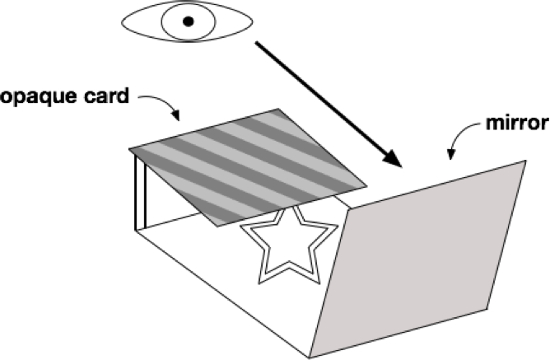Anterograde Amnesia
Overview
Source: Laboratories of Jonas T. Kaplan and Sarah I. Gimbel—University of Southern California
Anterograde amnesia is the loss of the ability to form new memories. This can be distinguished from retrograde amnesia, which is the loss of old memories. Anterograde amnesia can result from damage to structures in the brain that are involved in the formation of new memories. Patients who have damage to the structures of the medial temporal lobe, including the hippocampus, amygdala, and the surrounding cortices, often have severe deficits in the formation of certain kinds of memories. These cases can be informative as to how memory is organized in the brain, and how different systems support different kinds of memories.
In this video, we will test a patient with medial temporal lobe damage on a series of memory tasks designed to distinguish between different forms of memory. First, we will test short-term or working memory, which is the process we use to keep information in mind temporarily. Next, we will test two different forms of long-term memory: explicit and implicit memory. Explicit memories are conscious and easy to verbalize. For example, memories of facts or episodes from our lives are explicit memories. We can easily tell someone what we ate for breakfast, or what city is the capital of France. Implicit memory involves knowledge we gain from experience but that is not easily expressible. For example, knowing how to do things, or becoming habituated to a stimulus are forms of implicit memory.
These procedures are based in part on studies of the famous patient Henry Molaison, also known by his initials H.M., who had severe anterograde amnesia as a result of a surgery for intractable epilepsy in which parts of both temporal lobes were resected.1 We will perform a test of digit span, which measures short-term memory, a test of paired-associate learning, which measures explicit or declarative memory, and mirror-drawing, a test of implicit skill learning.2
Procedure
1. Recruit participants.
- Recruit a patient with medial temporal lobe damage.
- There are several causes of medial temporal lobe damage, ranging from surgery to viral diseases and other degenerative conditions. In this study we will test a patient similar to Henry Molaison who had parts of the hippocampus and surrounding temporal lobe removed as part of a surgical treatment for epilepsy.
- In order to be able to draw conclusions about the brain structures involved in various forms of memory,
Results
On the Digit Span Test, the patient successfully repeated a sequence of six digits in forward order, and five digits in reverse order. This level of performance shows some degree of intact short-term memory; average performance on this task for the healthy controls was seven forward, six reverse (Figure 2A). On the Verbal Paired-associate Test, the patient was not able to recall a single word pair. This demonstrates a severe deficit in the formation of explicit long term
Application and Summary
Cases like these have been incredibly important in the history of cognitive neuroscience for learning associations between brain structures and function. While this video has demonstrated a general effect of medial temporal lobe damage on memory function, it is important to note that a deeper understanding requires an examination of the relationship between the specifics of which structures were damaged, and memory performance. In the case of Henry Molaison, it was many years before the technology of brain imaging allowe
References
- Scoville, W.B. & Milner, B. Loss of recent memory after bilateral hippocampal lesions. J Neurol Neurosurg Psychiatry 20, 11-21 (1957).
- Milner, B., Corkin, S. & Teuber, H.L. Further Analysis of Hippocampal Amnesic Syndrome - 14-Year Follow-up Study of Hm. Neuropsychologia 6, 215-& (1968).
- Drachman, D.A. & Arbit, J. Memory and the hippocampal complex. II. Is memory a multiple process? Arch Neurol 15, 52-61 (1966).
- Uttl, B., Graf, P. & Richter, L.K. Verbal Paired Associates tests limits on validity and reliability. Arch Clin Neuropsychol 17, 567-581 (2002).
- Milner, B. Memory and the medial temporal regions of the brain. in Biology of Memory (eds. Pribram, K.H. & Broadbent, D.E.) 29-50 (Academic Press, New York, 1970).
- Annese, J., et al. Postmortem examination of patient H.M.'s brain based on histological sectioning and digital 3D reconstruction. Nat Commun 5, 3122 (2014).
Skip to...
Videos from this collection:

Now Playing
Anterograde Amnesia
Neuropsychology
30.3K Views

The Split Brain
Neuropsychology
68.4K Views

Motor Maps
Neuropsychology
27.5K Views

Perspectives on Neuropsychology
Neuropsychology
12.0K Views

Decision-making and the Iowa Gambling Task
Neuropsychology
32.8K Views

Executive Function in Autism Spectrum Disorder
Neuropsychology
17.8K Views

Physiological Correlates of Emotion Recognition
Neuropsychology
16.3K Views

Event-related Potentials and the Oddball Task
Neuropsychology
27.5K Views

Language: The N400 in Semantic Incongruity
Neuropsychology
19.6K Views

Learning and Memory: The Remember-Know Task
Neuropsychology
17.2K Views

Measuring Grey Matter Differences with Voxel-based Morphometry: The Musical Brain
Neuropsychology
17.3K Views

Decoding Auditory Imagery with Multivoxel Pattern Analysis
Neuropsychology
6.4K Views

Visual Attention: fMRI Investigation of Object-based Attentional Control
Neuropsychology
42.0K Views

Using Diffusion Tensor Imaging in Traumatic Brain Injury
Neuropsychology
16.8K Views

Using TMS to Measure Motor Excitability During Action Observation
Neuropsychology
10.2K Views
Copyright © 2025 MyJoVE Corporation. All rights reserved
